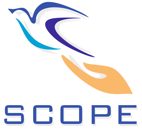Course Duration:
Part I & II – Sept 04, 2017 – Sept 28, 2017
Part III – Oct 03, 2017 – Oct 13, 2017
Course Fee:
Rs. 5000/– (Rs.3000/– for S.P.I.T. students)
Last date for enrollment: 07 August, 2017
About the course
UNIX and Linux operating systems have traditionally been the platform of choice for database, big data analysis and financial applications because of the rapid growth of excellent development tools. These tools can be used for the installation of software, software development, monitoring of system resources, and management of systems through Shell scripting. Shell scripting can automate and allow the fast development of software technologies on Java EE Server like IBM Websphere, Oracle WebLogic, Apache Tomcat, Oracle RDBM etc on UNIX and Linux Environment. CGI along with Shell scripting can offer well designed web services for the administration of servers. This course of shell scripting can also help the computer and IT professional from the domain of Database and System Administrators.
This training of Shell scripting is a FIRST course out of the remaining SIX courses in the track of “CGI Scripting and Text Processing”. This training will be an intensive 40 hours which is divided in three parts: I) Basics of Linux Commands and Shell Scripting (10 Hrs), II) Extensive Hands-on-Workshop of Shell Scripting (20 Hrs) and III) Development of Main Project through Assignments (10 Hrs). This course will teach the learners the extensive Linux commands and Shell scripting.
Pre-requisites
- Basics of Linux OS
- Basics of any programming language e.g. C, C++ etc.
Industries where this course will be useful:
Several product-based companies like Google, Amazon and Oracle etc. requires Shell scripting experts for the management, automation and maintenance of high-end servers. Service-based companies like TCS, Infosys, Cognizant, Capgemini, L&T InfoTech may also needs Shell scripting experts.
Course Outcomes
- Able to know the different environment variables of Linux Operating Systems.
- Able to create scripts to automate common tasks in Linux system.
- Able to creating report and online report using CGI and MySQL queries.
- Able to guard against malicious intents against the Linux Operating System.
Course Instructors
Dr. Anant V. Nimkar received PhD from IIT Kharagpur. Currently, he is working as Associate Professor at Sardar Patel Institute of Technology, Mumbai. He has 15 years of teaching experience. His interest includes Information and System Security, High Performance Computing, Cloud Computing, Graph Theory and Distributed Algorithms. He has proficiency in Linux OS Internals and Administration, Java EE, and Android Programming.
Mr. Jagjit Phull is a computer science engineer by profession who has vast and enriched industry experience of 23 years and currently works as network administrator and developer. He has been working with GNU/Linux and Unix systems from around 1994 and has administered and developed solutions based on UNIX-AIX/Solaris/HP-UX, GNU/Linux -Debian, Ubuntu, Fedora, CentOS. Also, he automated networking monitoring and presented clustering solutions and distributed clustering. He has handson and fluid experience and knowledge in working with different technologies like Hadoop, Cassandra, Mongodb, DCEBigIP, Netscalermysql, PostgreSQL, Nagios, Cacti, SEC etc.
Prof. Yogesh H. Jadhav is currently working as Assistant Professor in Sardar Patel Institute of Technology, Andheri. He has 5 years of Teaching Experience. He worked as corporate trainer for Livewire India. He worked as Programming Head for Anubhav Institute Pvt. Ltd. He conducted various workshops on Cloud Computing, python, .Net, Linux and Web Development with SEO.
Prof. Abhijeet V. Salunke received his M.E. in computer engineering stream from Mumbai University. Currently he is working as Assistant Professor in Sardar Patel Institute of Technology. He has worked with Cognizant India Pvt. Ltd. as a Programming Analyst in the field of Advance Java along with JSTL technology. He has 5 years of industry and teaching experience. His interest includes Structured and Object Oriented Analysis and Design, Mobile Communication and Computing and Computer Networks, Security and Data analytics. He has proficiency in the domain of Server administration.
Course Layout
Part I – Basics of Linux Commands and Shell Scripting (10 Hrs):
Session – 1:
- Introduction to Shell Scripting: Sha-Bang, Script Execution, Special Characters, Variables and Parameters.
- Quoting, Exit and Exit Status, Tests, Operators.
Session – 2:
- Environment Variables, Loops and Branches.
- Command Substitution and Arithmetic Expression.
Session – 3:
- Internal Commands, External Filters, Programs and Commands.
- System and Administrative Commands.
Session – 4:
- Regular Expressions, Here Documents and I/O Redirection.
- Sub-shells, Restricted Shells, Process Substitution, Functions.
Session – 5:
- Aliases, List constructs, Arrays, Indirect References and Preliminary CGI Scripting through Bash
- Network Programming, Debugging, Script Options and Special Directories viz. /dev, /proc, /dev/zero, /dev/null.
Part II – Extensive Hands-on-Workshop of Shell Scripting (20 Hrs):
Session – 1 & 2: Hands on – A high level tool for installing packages, with interaction of the user
Session – 3 & 4: Hands on – Document / Catalog Management systems
Session – 5 & 6: Hands on – Performing basic security check on the OS
Session – 7 & 8: Hands on – Configuration of the applications like apache server in friendly way.
Session – 9 & 10: Hands on – User Administration through CGI – Shell Scripting.
Part III – Development of Main Project through Assignments (10 Hrs):
Each course participant will be assigned a main course project. Firstly, the participant has to submit the details of plan of action of 10 hrs. Finally, the participant has to submit the main course project for the evaluation and final Course Certificate.
